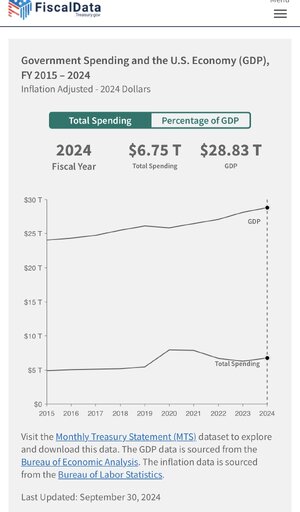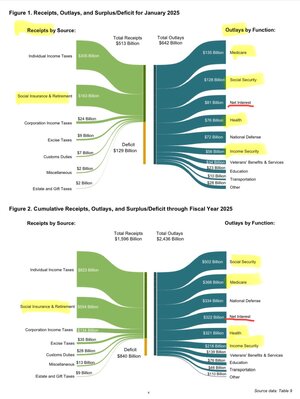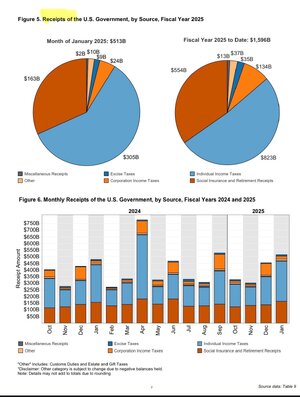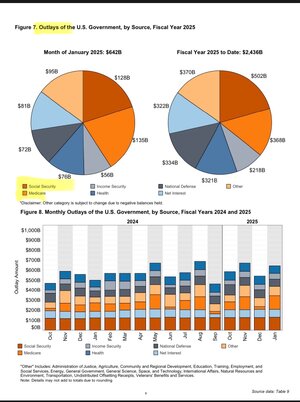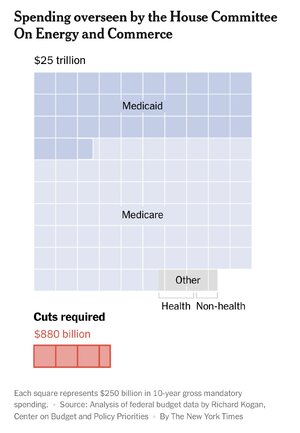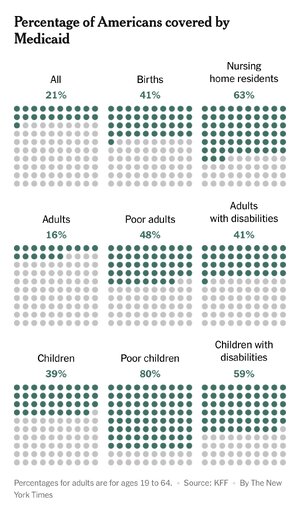- Messages
- 22,132
The GOP budget framework aims for $880 billion in mandatory spending cuts over 10-years.
The Treasury Department explains it this way:
“…Mandatory spending, also known as direct spending, is mandated by existing laws. This type of spending includes funding for entitlement programs like Medicare and Social Security and [most Medicaid and] other payments to people, businesses, and state and local governments. [MY NOTE: This also includes interest payments on the National Debt]
For example, the Social Security Act requires the government to provide payments to beneficiaries based on the amount of money they’ve earned and other factors. Last amended in 2019, the Social Security Act will determine the level of federal spending into the future until it is amended again.
Due to authorization laws, the funding for these programs must be allocated for spending each year, hence the term mandatory.
… Discretionary spending is money formally approved by Congress and the President during the appropriations process each year. Generally, Congress allocates over half of the discretionary budget towards national defense and the rest to fund the administration of other agencies and programs. These programs range from transportation, education, housing, and social service programs, as well as science and environmental organizations. …”

 fiscaldata.treasury.gov
fiscaldata.treasury.gov
2/3 of the budget is mandatory spending (and the interest expense has been increasing significantly due to higher interest rates), so anyone talking about material budget cuts is necessarily talking about cutting mandatory spending.
The Treasury Department explains it this way:
“…Mandatory spending, also known as direct spending, is mandated by existing laws. This type of spending includes funding for entitlement programs like Medicare and Social Security and [most Medicaid and] other payments to people, businesses, and state and local governments. [MY NOTE: This also includes interest payments on the National Debt]
For example, the Social Security Act requires the government to provide payments to beneficiaries based on the amount of money they’ve earned and other factors. Last amended in 2019, the Social Security Act will determine the level of federal spending into the future until it is amended again.
Due to authorization laws, the funding for these programs must be allocated for spending each year, hence the term mandatory.
… Discretionary spending is money formally approved by Congress and the President during the appropriations process each year. Generally, Congress allocates over half of the discretionary budget towards national defense and the rest to fund the administration of other agencies and programs. These programs range from transportation, education, housing, and social service programs, as well as science and environmental organizations. …”

Fiscal Data Explains Federal Spending
Check out @FiscalService Fiscal Data’s new federal spending page! #FederalSpending
2/3 of the budget is mandatory spending (and the interest expense has been increasing significantly due to higher interest rates), so anyone talking about material budget cuts is necessarily talking about cutting mandatory spending.

